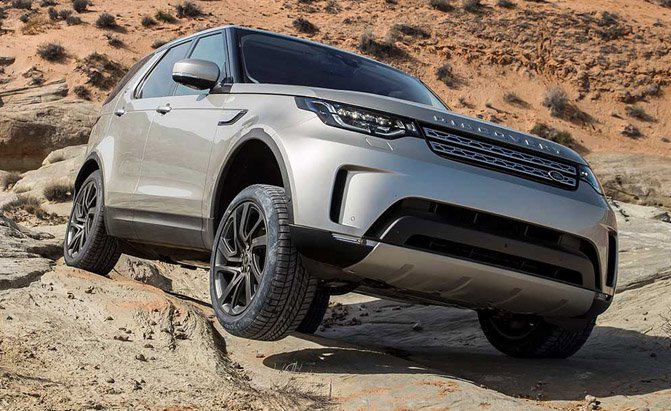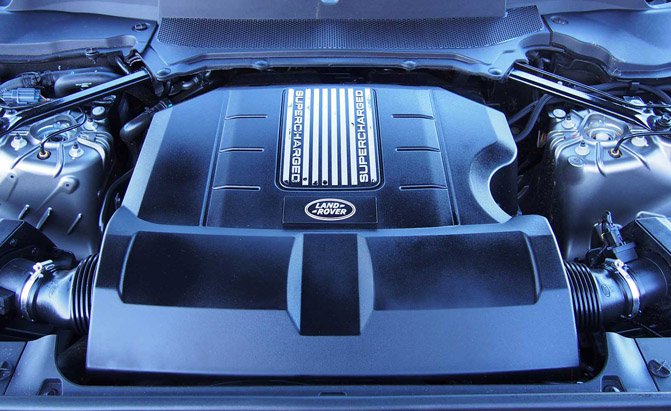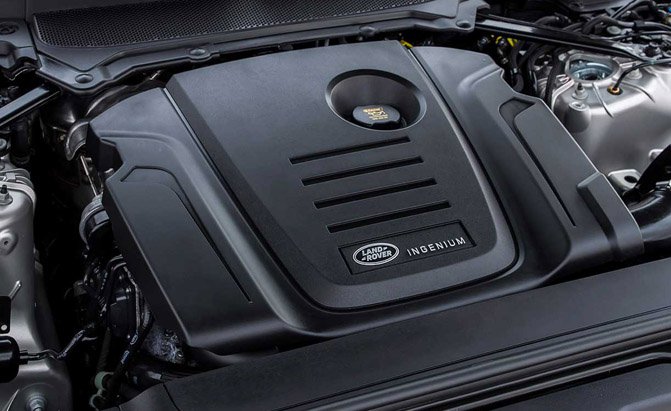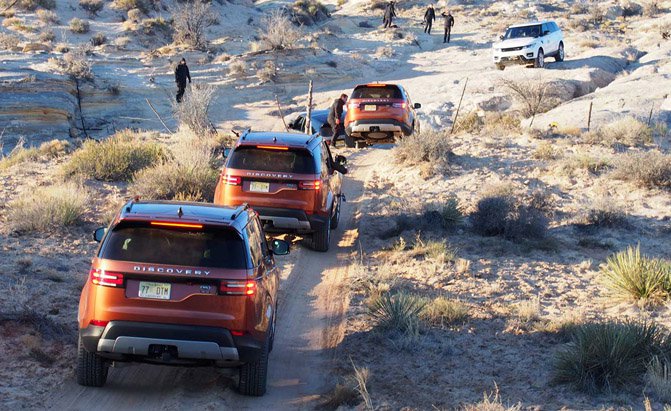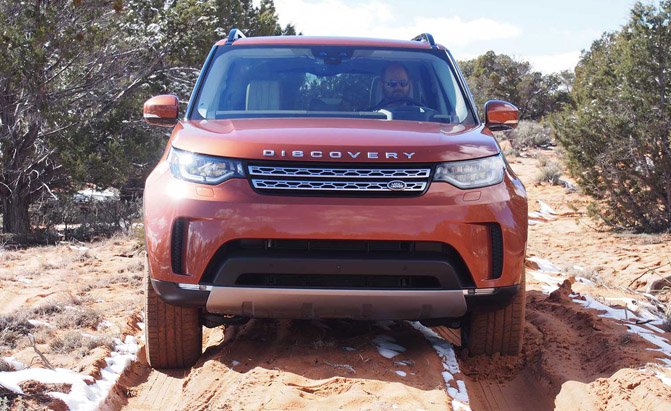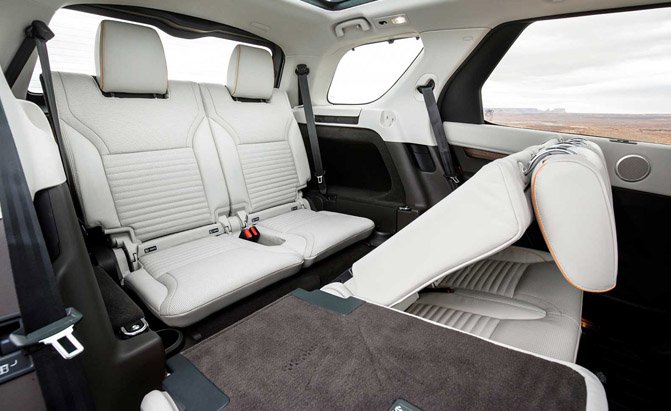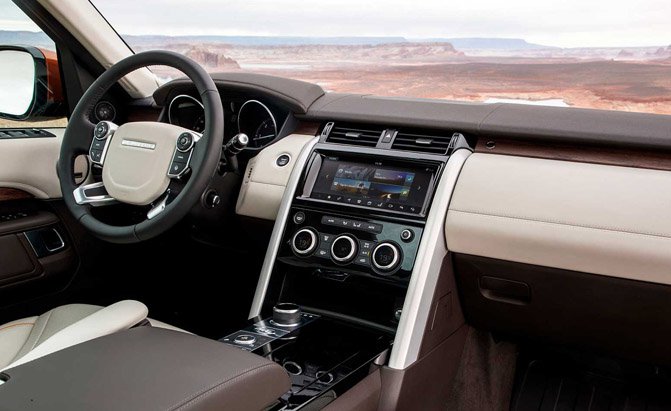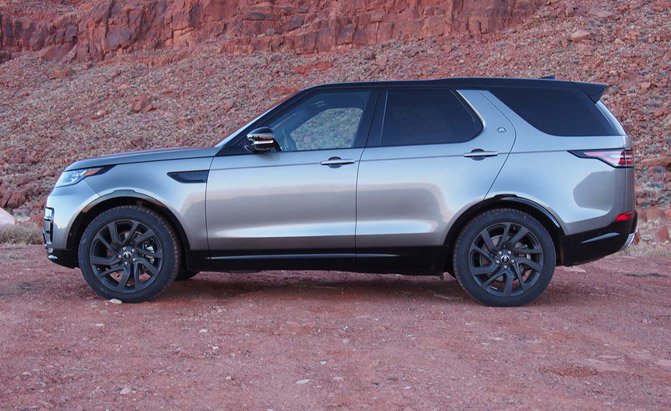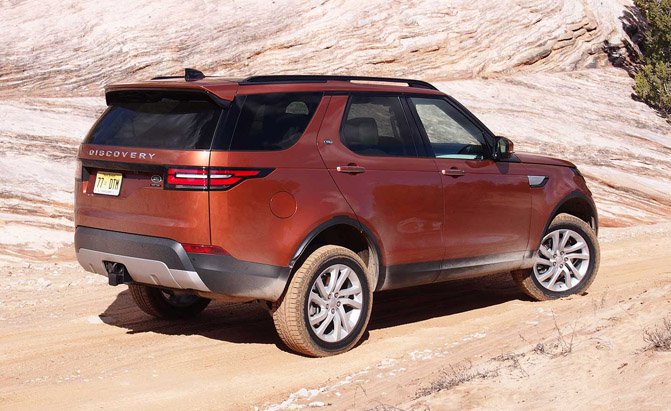Utah is like no other place on earth. If NASA ever decides to fake a mission to Mars, they should shoot the landing scenes here.
Seemingly the whole of this Southwestern state is awash in an ethereal color palette that’s almost too rich to believe. Dusty-gray stone contrasts with burnt-orange soil, oversaturated browns come to life against the outstretched lapis-hued sky, which seems close enough to grab yet stubbornly remains just out of reach. This is a rugged and hauntingly beautiful corner of the globe, similarities it shares with the all-new Land Rover Discovery, which we put through its paces in the Beehive State.
Now in its fifth generation, this ever-capable SUV has been dramatically improved in nearly every way, offering well-heeled drivers greater comfort, more capability, enhanced cabin versatility and even a lower base price.
Lost and Found
The heart of this new Discovery is a unibody architecture, one that’s comprised of about 85 percent “aluminium.” By switching from steel to this lightweight metal, the vehicle has shed around 1,000 pounds compared to the LR4 it replaces, something that pays major dividends in numerous areas, bolstering fuel economy, enhancing dynamics and increasing refinement, to list just a few.
Still, don’t expect this vehicle to feel like a Mazda Miata when you chuck it into a decreasing-radius corner; even in lightest North American trim the Discovery still weighs around 4,800 pounds (2,177 kilograms).
Still, this platform is a truly granitic foundation, one that exhibits almost zero flex, even in extreme off-road situations. With one wheel more than a foot in the air, its doors and hatch still open and close without binding; hammering down rutted or washboard backroads elicits zero squeaks or rattles inside. When Land Rover engineers boast this is the structurally stiffest Discovery in history, I’m convinced they’re not blowing smoke.
3.0 Liters, Two Engines, One Tough Choice
Land Rover’s American clientele will have two different powerplants to choose from in this vehicle, both are of the V6 persuasion and, oddly enough, each one displaces 3.0 liters.
The base engine burns gasoline and features a belt-driven atmosphere enhancer that helps it deliver 340 horsepower and 332 lb-ft of peak torque. It can get the Discovery to mile-a-minute velocity in just 6.9 seconds (7.1 seconds to 100 km/h).
For drivers willing to trade the alluring whine of a supercharger, and the top-end acceleration it helps provide, for more abundant twist and significantly better fuel economy, the Discovery can also be equipped with a diesel. It’s good for a modest stable of 254 horses, but torque clocks in at 442 lb-ft starting at just 1,750 RPM. That’s enough kibbles and bits to get this luxury SUV to 60 miles an hour in a fleet 7.7 seconds (8.1 seconds to 100 km/h). It’s also worth noting how refined this engine is: it’s INCREDIBLY smooth and quiet, so much so that most drivers would have no idea it burns oil.
The gasoline-powered model is slightly quicker but it’s nowhere near as economical. It returns an advertised 16 miles per gallon in city driving and 21 on highway jaunts. The compression-ignition offering is appreciably thriftier, stretching the same amount of diesel 21 miles in urban conditions and up to 26 on the interstate. If there’s one downside to the diesel it’s that Land Rover charges an extra $2,000 for it and it’s not available in the base SE model. Oh well, you can’t win ‘em all.
SEE ALSO: 2015 Land Rover Discovery Sport Review
No matter the engine, all 2017 Discoveries (or is it Discoverys?) are equipped with a ZF-sourced eight-speed automatic transmission. Prompt and refined, this gearbox is almost telepathic, always selecting the optimal ratio. For extra driver engagement, a pair of low rent-feeling paddle shifters pop out from behind the steering-wheel spokes like a pair of charcoal-colored prairie dogs, but they’re all but unnecessary as the transmission is so on point.
Legendary Capability
Naturally, this all-new Land Rover is built to tackle the gnarliest terrain Mother Nature can cook up; coincidentally, she’s served up some of her worst in the Beehive State.
Beautiful to behold but a challenge to cross, Utah’s craggy surfaces and mountainous topography proved a challenge even for the capable Discovery. Fortunately, it’s equipped for just about anything.
Maximum ground clearance measures more than 11 inches, wheel articulation just shy of 20. This vehicle can even drive through nearly three feet of water. A Land Rover staffer told me that if you attempt to ford any more the back end will float.
SEE ALSO: ‘Reborn’ Land Rover Classic is Expensive and Worth Getting Excited For
Owners can choose between a pair four-wheel-drive systems, one with a two-speed transfer case and another without. The former is fully synchronized and can be shifted between high- and low-ranges at speeds up to 37 miles an hour (60 km/h).
A four-corner air suspension system is also available, providing a luxury-car ride on road and beastly performance off. So equipped, the body can be raised and lowered to enhance ground clearance in the dirt or improve fuel economy on highway drives.
Beyond all of this basic off-roading gear, there is so much more that we simply cannot cover all of it in this review, but let me tell you about a couple of the nifty developments in Land Rover’s off-roading arsenal. First there is All-Terrain Progress Control, which automatically manages vehicle speed while off-roading, and then there’s the next generation of Land Rover’s Terrain Response system, which adapts vehicle behavior to differing conditions. Add it all up and the Discovery should provide more off-road capability than the retired LR4.
Luxury Amenities
Despite its ready-for-anything capability, this Land Rover also provides a suitably luxurious interior. Creamy-soft leather, friendly sightlines and premium plastics all harmonize nicely, which hasn’t always been the case in this company’s vehicles. The Range Rover Sport I reviewed last year had a cabin rife with loose-fitting panels and creaky plastics, something that’s completely unacceptable in $20,000 family sedans, let alone a luxury SUV that cost 84 grand. Fortunately, there’s none of this shoddy assembly in the Discovery.
SEE ALSO: 2016 Range Rover Sport HSE Td6 Review
With three rows of seats, this vehicle can accommodate up to seven people. Its second-row bench is spacious and comfy for adult passengers and, against the odds, so is the third-row. Two fully grown, life-sized individuals can sit there without undue distress, which is a remarkable feat.
One of this vehicle’s most innovative features are those second- and third-row seats. They can all be power folded from the driver’s seat, cargo area or even via a smartphone app. Enabling this are 13 separate sensors and modules, which are controlled by some 23,000 lines of computer code! This provides 21 different seating combinations, and with everything folded down there’s nearly 83 cubic feet (2,350 liters) of cargo space to fill.
Sprinkled throughout the cabin are nine USB ports and six 12-volt charging outlets, so your extended family
and close acquaintances can keep all their personal electronics charged. The in-vehicle Wi-Fi hotspot can also support up to eight devices.
The new Discovery’s interior is truly praiseworthy. Comfortable, spacious, solidly built and nearly silent at speed, it sets a new standard for the brand. Downsides are few, limited to the InControl Touch Pro infotainment system that isn’t particularly intuitive, as well as the layout of the climate controls. A parts-bin effort, they look like a complete afterthought, even if there’s a clever storage cubby hidden behind a hinged faceplate.
The Drive
Whether you go with the gasoline V6 or optional diesel, you’re never wanting for power in the new Discovery. The former pulls with authority at all speeds and the latter hits hard down low, often where it counts most.
When equipped with the optional air suspension system, this vehicle’s ride quality is out of this world. It eats large road imperfections like candy and absorbs washboard surfaces with grace. Given how capable it is off-road, the refinement it provides on asphalt is nothing short of astounding.
Surprisingly for such a husky vehicle, the Discovery’s steering is reasonably communicative and nicely weighted. The vehicle changes direction with vigor yet the wheel never seems to kick back, even while traversing rutted dirt roads or climbing stony inclines.
The Verdict: 2017 Land Rover Discovery
The 2017 Discovery could be the best product built by Land Rover, even better than their audaciously ritzy Range Rover. It’s well thought out, smartly designed and richly appointed. What other vehicle can do 90 miles an hour on washboard dirt surfaces (against better judgement, my driving partner had no qualms about doing this), climb mountains, slog through nearly three feet of water and still look regal on date night when valeted in front of a fancy steakhouse?
But perhaps this vehicle’s greatest asset is an alluring base price. Three trim levels will be available, with the entry-level SE variant starting at $49,990 ($64,222 Canadian), $910 less than a comparable LR4. Stepping up from there, you can get a gasoline-powered HSE variant for around 57 grand ($71,222 Canadian), while a top-of-the-line HSE Luxury model with the diesel will set you back around $66,000 ($79,722 Canadian). The new Discovery should go on sale in the U.S. this June, including at dealerships in the great state of Utah.
Discuss this story on our Land Rover Forum







